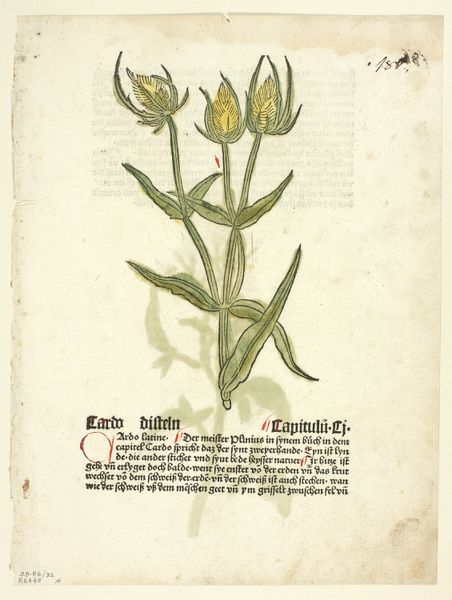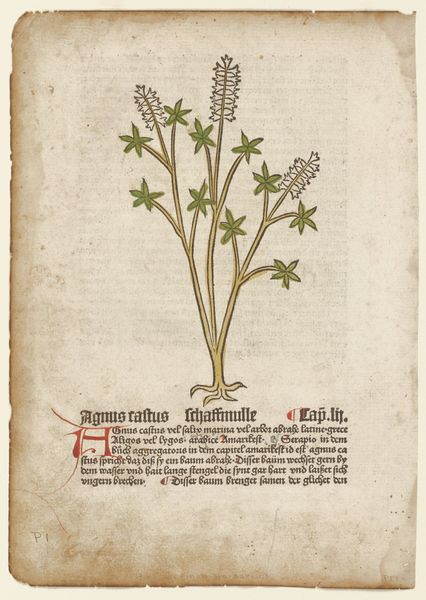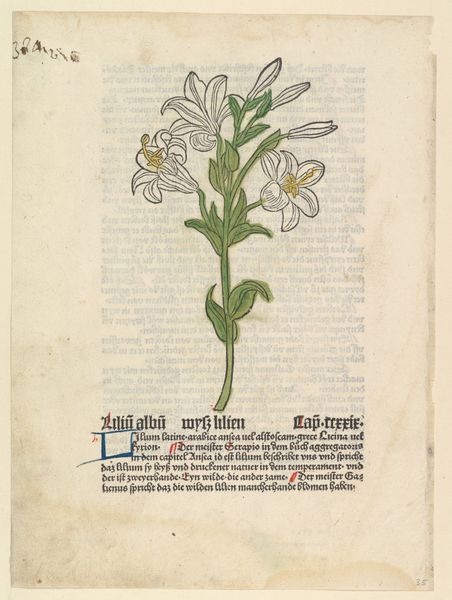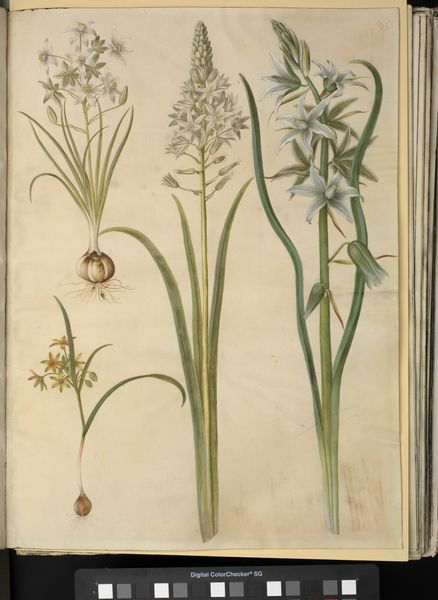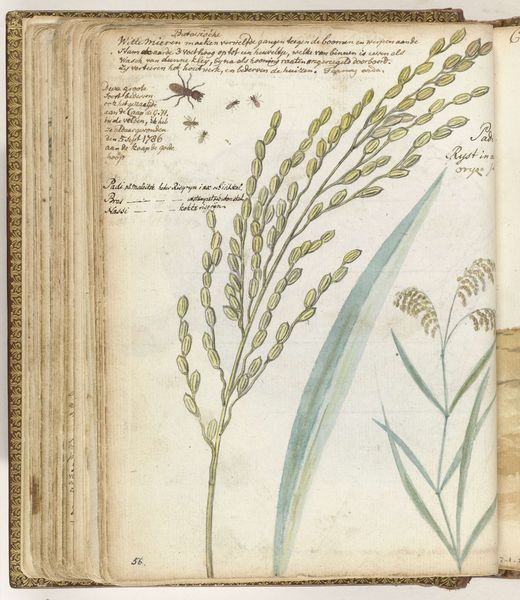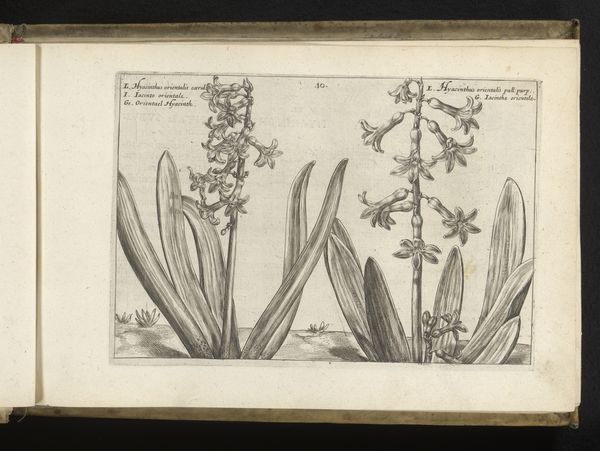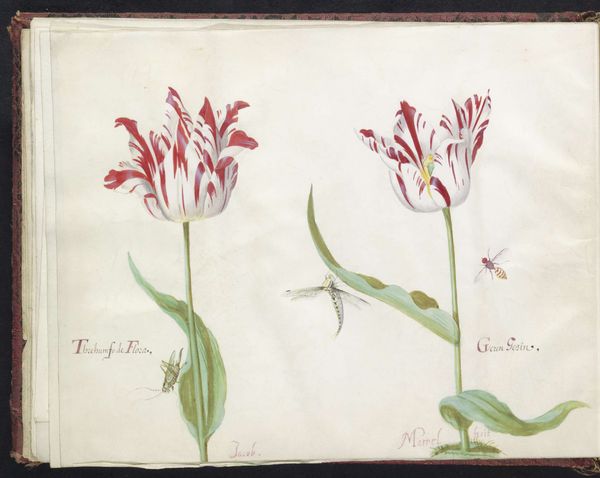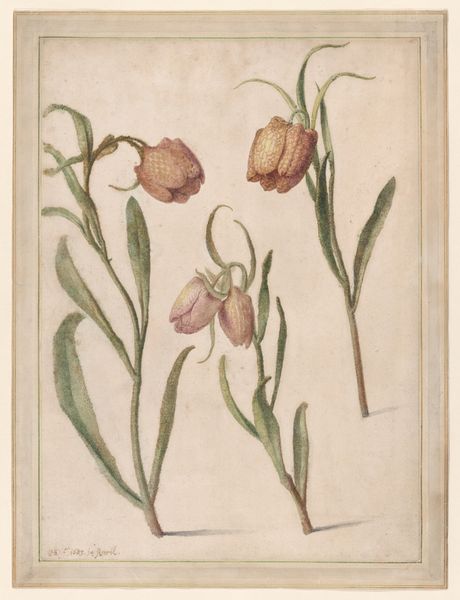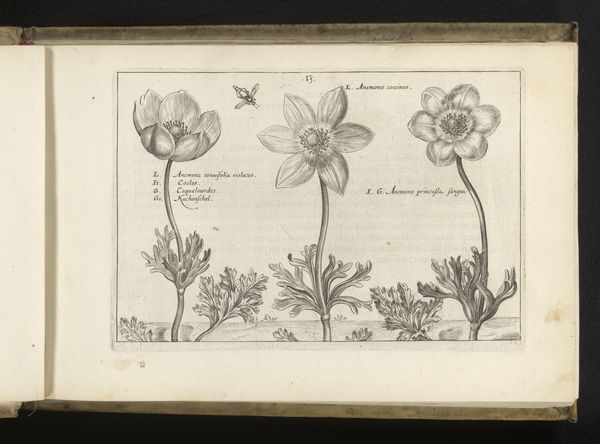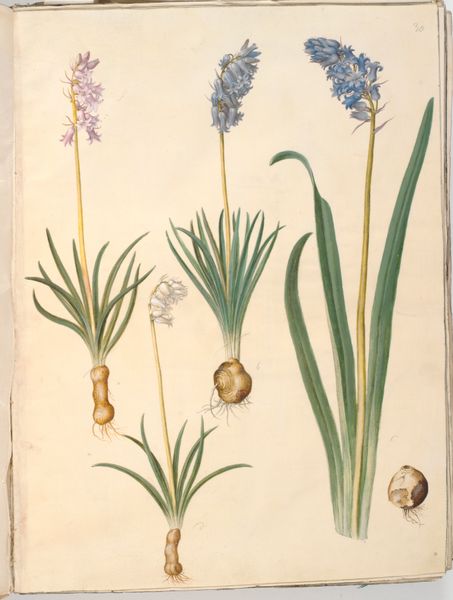
drawing, print, woodcut
#
drawing
# print
#
figuration
#
11_renaissance
#
woodcut
#
northern-renaissance
Dimensions: 12 7/8 x 6 7/8 in. (32.7 x 17.46 cm) (image)
Copyright: Public Domain
This 16th-century woodcut, made by Pierandrea Mattioli, depicts the Narcissus flower along with the Tulipa and other similar species. The Narcissus, named after the Greek mythological figure fixated on his own reflection, carries the weight of vanity and self-obsession. But beyond this, its cyclical bloom—dying back only to re-emerge—hints at themes of renewal and eternal return. The motif of the Narcissus appears across time: from ancient Roman frescoes in Pompeii, where it symbolizes the ephemeral nature of beauty, to Renaissance paintings where it is often coupled with images of skulls as a memento mori. Consider the 'eyes' of the flower, how in some cultures, the ‘evil eye’ can ward off negative forces. Do these eyes protect or taunt? The image taps into our primal fears and desires, reminding us of our own mortality.
Comments
No comments
Be the first to comment and join the conversation on the ultimate creative platform.
